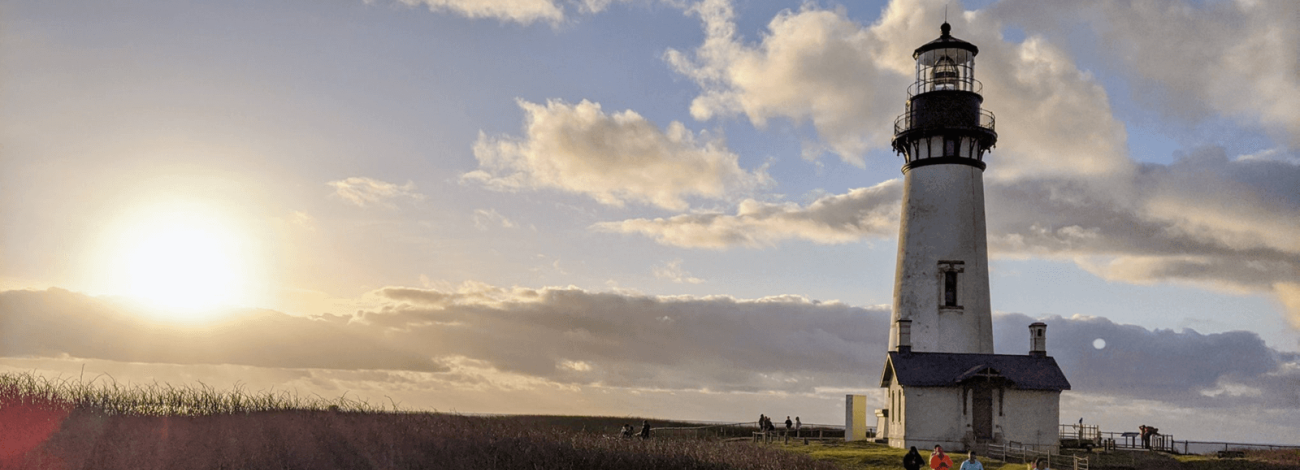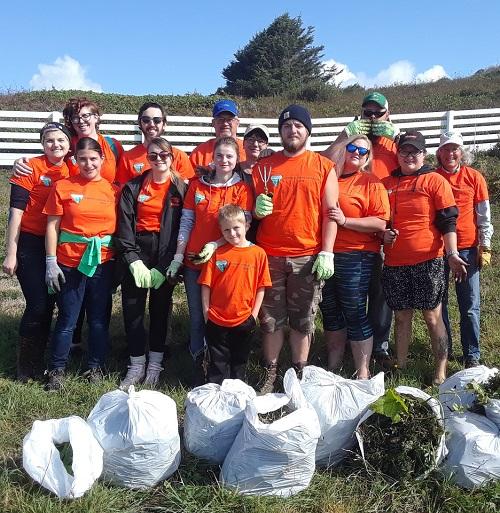
Yaquina Head Lighthouse
Standing 93 feet tall at the westernmost point of the basalt headland, the historic Yaquina Head Lighthouse has been a bright beacon of the night, guiding ships and their supplies along the west coast since the light was first lit on August 20, 1873.
The lighthouse is Oregon's tallest, but just one in a string of lighthouses strategically planned along the Pacific Coast to allow mariners to sail the rocky coastline after dark. The lighthouse is visible when ever the park is open (fog depending).
The nightly vigil of watching the light is gone as are the resident keepers and their quarters, but the staff of Yaquina Head guides visitors through the lighthouse with tales of yesteryear.
Construction History
At the time the Yaquina Head Lighthouse (originally called the Cape Foulweather Light at Yaquina Point) was built, the area was a wilderness. There was no real road to the lighthouse—just a trail that a horse and wagon could traverse partly by traveling along the beach. Construction materials and supplies had to come by way of sea. The Lighthouse Tender Shubrick, a side-wheel steamer, delivered goods to the small cove just south of the headland, where workers hauled them up the bluff.
Construction of the massive white conical shaped tower began in late 1871; with the wall at the base over five feet thick, it was built to last for generations. Once construction was completed, the fixed white light was illuminated on the night of August 20, 1873, when Keeper Fayette Crosby lit the 4-wick lamp fueled by lard oil.
It was equipped then, as it is today with a first order Fresnel lens. The lens was manufactured in Paris in 1868 by Barbier & Fenestre, and shipped from France to Panama, transported across the isthmus, then shipped north to Oregon.
Along with the construction of the lighthouse, a large dwelling for two keepers and their families was built east of the tower. Other structures included a smaller keeper's dwelling, stable, cisterns, and a workshop. Keepers and their families planted and tended a kitchen garden.
Recent History
The 1930s brought many changes to the light station. The light's power source was changed from oil to electricity. A 1000-watt theatrical lamp generating over 130,000 candlepower was installed. The US Lighthouse Service was transferred to the U.S. Coast Guard in 1939. This same year, the light character of Yaquina Head was changed from a fixed to a flashing pattern called a "signature," unique to each lighthouse. Yaquina Head's signature is two seconds on, two seconds off, two on, fourteen off, and then repeats.
Through the years new structures replaced the old. But, as one retired lighthouse keeper put it, "the buildings left a lot to be desired, as winds would come whistling through the buildings with enough force to lift a catalog off the floor." Eighty mile per hour winds are not uncommon at the headland, especially during the wet winter months.
In 1966, the era of the lighthouse keeper at Yaquina Head ended. A computer was installed at Yaquina Head Lighthouse. When the light malfunctioned, the modem automatically notified the Coast Guard's Aids to Navigation Team. A resident keeper was no longer needed on the grounds. The unoccupied quarters eventually fell into disrepair and were removed in 1984.
Children in the Lighthouse
When the lighthouse was constructed in 1872 children of lighthouse keepers and lighthouse visitors were not permitted to climb the 114 stairs in the tower. The US Lighthouse Service feared for their safety. Because Yaquina Head Lighthouse retains its historic stairs, handrails, and balusters, stumbling or slipping between the wide gap in the balusters still poses dangers. For their safety children must be at least 42 inches tall to ascend the lighthouse tower stairs. Additionally, those children over 42 inches tall wishing to climb, must be accompanied by an adult, who may not carry or pick up the child.



